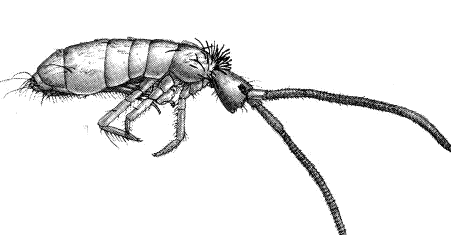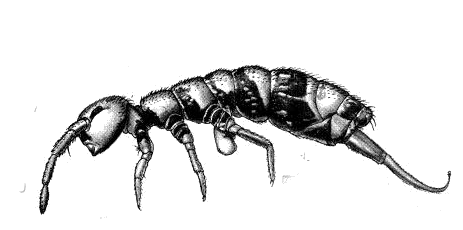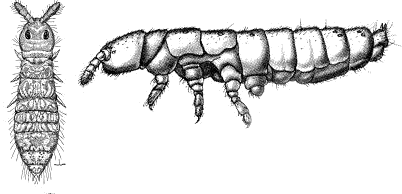|
|
New Jersey Scientist says: COLLEMBOLA (Habitus odontellidae) found in homes with fungal mold identified on human skin may often be misdiagnosed as afflicted with delusory parasitosis or morgellons. COLLEMBOLA (Habitus Odontellidae) March 4, 2007, Morristown, New Jersey - Each year, thousands of Americans complain to their physicians about itching, stinging, biting and crawling sensations on or under their skin. Many believe they have head lice, scabies or the phenomena of what is called Morgellons. These people are often referred to psychiatrists or prescribed anti-psychotic medications. But clinical industrial hygienist, Medical Mycologist and Histopathologist DMM Prof Joseph Dumanov suggests there is much more to this phenomena than meets the eye or the mind of the physician. The professor has identified Collembola (Habitus Odontellidae) often present and identified in his research studies of human habitations where fungal mold is present and alerts physician and dermatologists to inquire of their patients of the condition of their home. Specifically the physician must inquire and ask "is your home damp, does it have a musty smell or do you know of or see any mold?" If any of these are answered in the affirmative then an infestation by Collembola is a possibility. 2004 findings reported* in the Journal of the New York Entomological Association support the professor's recent disclosure. indicating that many of these humans certainly do have something in and on their skin and it's called - Collembola. In 90% percent of those who participated in the reported study were found to have Collembola. All of study participants had been diagnosed with delusory parasitosis, a presumed psychiatric condition among people who believe they are infested with an insect or parasite. Happily the findings support the argument of many patients that they "actually have something crawling on or under their skin and they are not delusional. Collembola are taxonomically hexapods, with six legs, antennas, and no wings. The common Collembola sp. springtail possess a "leaf spring" (hence the name) appendage is used for limited motility allowing them to jump up to 4 inches at a time. Collembola feed on algae, fungi, bacteria, decaying matter and now we see them dermataphagocytes. The professor states "Collembola are active in wet or damp human habitations and are associated with a presence of fungal mold. Eliminating the fungal mold and causation of its presence often results in the riddance of the Collembola" When asked why are they contemporaneous he says "Fungi are a delicacy and these bugs are gourmets!" We wanted to know the doctor's opinion and view about the new condition refereed to as "morgellons" The professor stated "I can't begin to tell you many calls I get nationally about the condition referred to as morgellons. A recent local case involved a young mom that was being treated as delusional and prescribed with anti psychotics. After our interview and consultation we decided to investigate the case using the sC-I prtocol and found there to be in fact Collembola present. I can not justify calling Morgellons a diagnosis. The collection of symptoms, the associated complaints and limited clinical presentations are in nearly all cases dermatological, allergenic, toxicological in origin and of course involving many microscopic arthropods and pediculites such as geographic lice, capitis, corpus and pubis. And yes many other conditions. Morgellons is easily explained by the current clinical diagnostic model, morgellons in general are no mystery. The mysteries that do exist are often routinely solved and cases with a longer history being at times highly complex require an indepth investigations employing the sC series of protocols. sC protocol selection is crtical." Regarding the health effects little is known or how to prevent or treat them as a problem for human skin but using common immunohistological techniques that can be ascertained by such appropriate testing and study. The professor interestingly notes that 80% of the reported population sample consist of females. He suggests the reason may be females skin is more sensitive, that the Collembola may have an attraction to hormones or even possibly perfumes or other scents. The professor encourages anyone experiencing such symptoms or condition see their physician or a dermatologist first (skin scraping) and if the symptoms persist have their home properly investigated.
|



 50-300 um
50-300 um